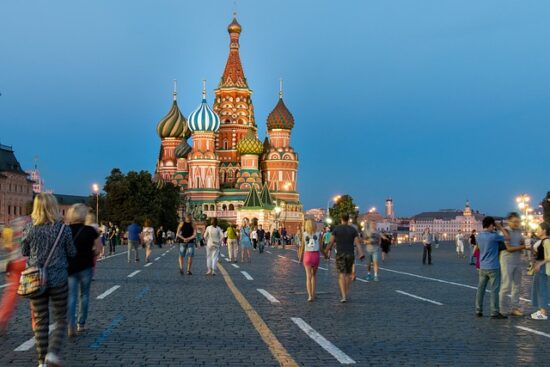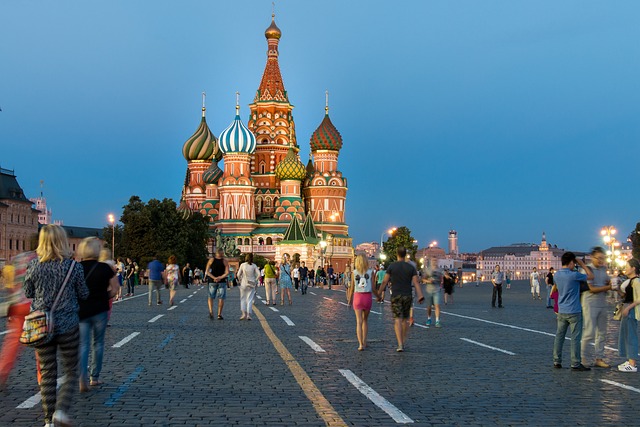Background & Physical Setting
The Russian Federation or perhaps Russia is the largest country (by land) in the world. The country that holds the world’s largest immigrants after U.S. have left many marks in the history. Previously it had occupied an area of 8.5 million sq. miles when the country was known as ‘Soviet Union’, but it still exceeds 6.5 million sq. miles which is greater than any other country.
Russia covers one-ninth of the world’s total area, including Antarctica. It touches two big continents (Europe and Asia) on its way while travelling from Baltic Sea to the shores of Pacific Ocean. The country extends 6,000 miles from east to west. Most of the Russian people have European influence as is evident from their standard of living; nevertheless their cultural and historic ties with Asia make it worth noting.
As we move from north to south, we know that the country stretches about 2,000 miles ranging from frozen tundra that borders the Arctic Sea along with the Caucasus Mountains and ends in the Altai Mountain in Asia.
Russia Facts For Kids
Official Name
The official name of Russia is “Russian Federation”
Russia’s Flag
There are three horizontal stripes with different colors on the Russia flag. The first time it was used in the reign of Peter the Great, some 300 years ago.
Location
Northern Asia and Eastern Europe
Capital
Moscow
Language
Russian
Population
The total population of Russia is 143.5 million as of 2012
National Symbol
The national symbol of Russia is “Double-headed Eagle”
 Russia Day (June 12)
Russia Day (June 12)
National Flower
Chamomile
National Animal
Russian Bear
National Bird
Double-headed Eagle
Russian Rail Network
The Russia Rail Network extends to 87,000 kilometers
Net Worth of the 27 richest Russians
US $90.6 billion
Per capita consumption of Alcohol
Per capital consumption is 15.1 liters per year
Number of languages spoken
There are more than 100 languages (except Russian) spoken in Russia.
Number of Nobel Prize Winners
20
Gross Domestic Product
US $2.015 trillion (2012)
Life Expectancy
The average life expectancy of Russians is 69 years
Population Growth
Russia has a population growth of 0.4% per year
Religion
Russian Orthodox plus Muslim, Baptist, Roman Catholic, Jewish, Lutheran, Evangelist, Buddhism. None 63%, Christian 22%, Muslim 15%.
Climate
Winters are too long and too cold while hot summers are very short
Currency
Rubble
Siberia—the city of Russia
Siberia—the city of Russia, is heavily forested since it has many birch trees. It is due to this reason that Russia is the largest producer of oxygen in the world. In fact, the taiga of Siberia, pine, fur, a spruce forest, and larch, is the largest unbroken forests in the world, covering around 19% of the entire world’s forests.
Rich in Natural Resources
The Russia Federation is extremely rich in natural resources. These resources include minerals, farmland, thick forests, and streams to harness for electric power.
One-fourth of the World’s Fresh water
Russia contains one-fourth of the world’s fresh water.
How many people live in Cities?
About three-fourths of the Russians live in cities while the remaining lot finds their homes in villages.
Largest City
Moscow—the capital city is the largest by population.
Traveling
Russians mostly travel by train
Favorite wild food in Russia
Mushroom is the most favorite wild food
Major Mountain Ranges
Ural, Caucasus
Lowest Point
Caspian Sea
Highest Point
Mount Elbrus 18,510 feet (5,642 m)
Major Rivers
Volga, Don
Number of Lakes
There are 200,000 lakes in the country and these figures also include two largest lakes in Europe; Lake Baikal and Lake Onega.
Number of Mammals
Russia hosts 266 mammal species in the world
Number of Birds
There are around 700 bird species all throughout Russia. Some of these species are native to the country.
Major Cities
Moscow, St. Petersburg, Nizhny Novgorod
Head of State
President
Head of Government
Prime Minister
Nationhood
August 24, 1991 (from Soviet Union)
Economy
Agricultural Products: Crops—wheat, rye, barley, cabbage, sugar beets, corn, grapes, cotton, potatoes, goats, poultry, freshwater fish, cattle, sheep, horses, tomatoes, peas, seafood, livestock and other fish, and sunflowers.
Manufactured Products: Iron and steel, petroleum products, chemicals, cement, wood products, machine tools, food processing equipment, petroleum equipment, and mineral fertilizers.
Mining Products: coal, natural gas, petroleum, potash, phosphate rock, bauxite, iron ore, salt, chromite, zinc, nickel, copper, lead, and asbestos.
Timeline—Russia Facts For Kids
In 988, Byzantine Christianity was made Russia’s official religion by Vladimir.
Mongols invade Russia in 1240.
Romanov Dynasty begins in 1613.
In the late 1600s, Peter I the Great begins modernization of Russia.
In the late 1700s, Catherine the Great expands Russian empire.
In 1814, Alexander I defeats Napoléon
Japan invaded Russia in 1904.
Russian army had suffered a lot in the World War I because it was poorly equipped. More than a million men lost their lives in the war.
Romanov Dynasty had come to an end in 1917.
The Soviet Union came into being in 1922.
In 1941 Germany attacked Russia.
World War II ends in 1945.
Joseph Stalin died in 1953.
In 1975, Russia launched its first ever satellite Sputnik I in space.
In 1979, Russia invades Afghanistan.
In 1991, the Soviet Union broke into several parts.
A new constitution is approved in 1993.


Leave a Reply